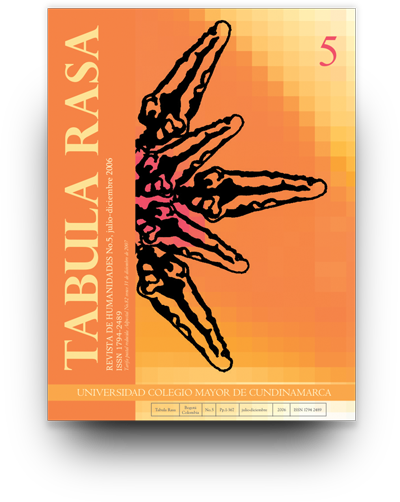The Catholic Church and the Colombian State; Combined Construction of a Nationality in the South of the Country
La Iglesia Católica y el Estado Colombiano, construcción conjunta de una nacionalidad en el sur del país
Show authors biography
With this paper I intend to show the historical context in which the process of acculturation of the Amazonian indigenous societies took place, specifically the ones that lived by the end of the nineteenth century in the territory that today conforms the Putumayo region. In order to present this concept, I analyze the 19th century legislation in Colombia that refers to the indigenous problem and the relations between the Colombian government and the Catholic institution; with the essential axis of both being the 1886 National Colombian Constitution and the concordat established in 1887 between the Vatican State and the Colombian government. Another element that I use to establish this historical context is the ideological discourse of that time, specifically the prime discourse of the Colombian leading elite, understanding this as the originator, due to its nature, of the acculturation process and the imposition of occidental beliefs and way or life onto the indigenous people.
Article visits 281 | PDF visits 130
Downloads
Almario G, Oscar. Etnias, región y estado nacional en Colombia: Las identidades en el gran Cauca durante el siglo XIX. Obtenido el 23 de Octubre de 2004, web site:http://bv.gva.es/ documentos/almario.doc.
Augé, Marc. 1994. Los no lugares. Una antropología de la sobremodernidad. Barcelona: Gedisa . Bonilla, Victor Daniel. 1968. Siervos de Dios y amos de indios. Bogotá: Ediciones Tercer Mundo.
Bordieu, Pierre. 2001. Sobre la televisión. Barcelona: Editorial Anagrama.
Cabrera, Gabriel. 2002. La Iglesia en la frontera : misiones católicas en el Vaupés, 1850-1950. Bogotá: Universidad Nacional de Colombia.
Casas Aguilar, Justo. 1999. Evangelio y colonización. Bogotá: Ecoe ediciones.
Friede, Juan. 1973. La explotación indígena en Colombia bajo el gobierno de las misiones. Bogotá: Publicaciones Punta de Lanza.
Gómez, Augusto Javier. 2005. «El Valle del Sibundoy: El despojo de una heredad. Los dispositivos ideológicos, disciplinarios y morales de dominación». Anuario Colombiano de Historia Social y de la Cultura. 32:51- 73.
Gómez, Horacio. 2000. La calumniada regeneración y otros ensayos polémicos. Bogotá: Universidad Católica de Colombia.
González, Fernán. 1993. «El concordato de 1887», Revista credencial historia, edición 41.
Hobbes, Thomas. 2000. Leviatán, elementos de derecho, tratado del ciudadano, tratado sobre la naturaleza humana y el cuerpo político. Buenos Aires: Losada editores.
Martín-Barbero, Jesús. 2002. «Colombia: ausencia de relato y desubicaciones de lo nacional». En Cuadernos de nación, imaginarios de nación, pensar en medio de la tormenta. Bogotá: Ministerio de cultura.
Romero, Alfonso. 1949. Historia de la regeneración. Bogotá: Editorial Iqueima.
Salamanca, Demetrio. 1916. Amazonía Colombiana. Bogotá: Imprenta nacional.
Smith, Anthony. 1997. La identidad nacional. Madrid: Trama editorial.
Wolf, Eric. 2001. Figurar el Poder. Ideologías de dominación y crisis. México: CIESAS.




